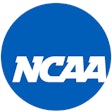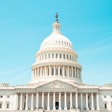
Division I student-athletes are graduating at record rates, according to the latest Graduation Success Rate data announced Wednesday. The overall single-cohort rate increased by 1 point to 91 percent, which is the highest rate recorded.
"The NCAA's mission is to provide a world-class athletics and academic experience for student-athletes that fosters lifelong well-being," NCAA President Charlie Baker said. "These record graduation rates illustrate the tremendous academic accomplishments of NCAA student-athletes and further emphasize the importance of the national office working with members to create outstanding educational experiences and opportunities for these remarkable young men and women."
Figures released Wednesday reflect graduation numbers among student-athletes who entered college in 2016. The NCAA has tracked GSR for more than two decades, and student-athletes have surpassed the original benchmark goal of 80 percent, with long-term graduation rate increases being observed year after year from an overall 74% in 2002 to this year's record 91percent.
Since 2002, significant gains have been demonstrated within all student-athlete sport subgroups, with notable increases in baseball, football, wrestling, and men's and women's basketball. Baseball student-athlete graduation rates have increased from 66 percent to 91percent. Football Bowl Subdivision rates have increased from 63% to 84%, while Football Championship Subdivision rates have increased from 62 percent to 80 percent. Men's basketball rates have increased from 56% to 86%, and women's basketball rates have increased from 80 percent to 93 percent.
This year, all women's sports recorded a rate of 92 percent or better, with field hockey, gymnastics and lacrosse all earning a 98 percent GSR.
Since the implementation of the GSR, Division I members have adopted impactful academic reforms and initiatives, including modifications of initial-eligibility requirements and progress-toward-degree standards, as well as application of the Academic Performance Program. Those reforms have helped pave the way for exponential graduation success.
"The Committee on Academics celebrates and honors Division I student-athletes for their commitment to academic excellence and graduation success," said Robert Davies, president of Central Michigan and chair of the Division I Committee on Academics. "The committee remains focused on analyzing the evolving college athletics landscape and devising initiatives and reforms to aid in continued student-athlete success."
While student-athlete graduation success continues to rise, additional flexibility in rules governing competition after transfer, implemented in 2021, could impact graduation rates in the future.
Division II academic rates remain at or near their highest levels
The NCAA has released the latest Division II graduation rate data, including the division's Academic Success Rate.
The national four-cohort ASR average remained at 76 percent, according to the most recent data. Overall Division II student-athlete graduation rates and many subgroup rates are at or near their highest levels.
"Division II is proud to have a long-standing commitment to academic success, and the division continues to prioritize its Life in the Balance philosophy," said Terri Steeb Gronau, NCAA vice president of Division II. "The dedication of our institutions, conferences, student-athletes, coaches and administrators to achieve academic and athletic success is unparalleled."
The NCAA developed the Division II ASR at the request of college and university presidents who believed the federal graduation rate was outdated. Division II's ASR data includes student-athletes who transfer into a school and removes student-athletes who left the school in good academic standing. In addition, given the partial-scholarship financial aid model of Division II, the ASR data includes student-athletes not on athletically related financial aid. The result is that ASR captures more than 30,000 nonscholarship student-athletes who were enrolled in the four years covered in the most recent data.
Even when using the less-inclusive federal rate, Division II student-athletes outperform the general student body by 7 percentage points. The federal rate for Division II student-athletes remained the same, with the student-athlete rate at 60 percent, while the federal rate for the general student body rose 1 percentage point to 53 percent.
Notable single-class student-athlete increases in ASR over the 17 years of calculating this rate in Division II include overall (from 69% to 77%), Black men (from 42% to 51%), Black women (from 61% to 76%), Hispanic/Latinx men (48% to 66%) and Hispanic/Latinx women (63% to 80%).
In addition, there have been notable increases in ASR for two-year transfer student-athletes (from 57% to 73%) and four-year transfer student-athletes (from 66% to 77%) over the past 10 years.
Division III student-athletes continue to thrive in the classroom
The 2023 reporting cycle was the fourth year the federal graduation rate and Academic Success Rate data submission was required for all Division III schools.
The national four-cohort average ASR for Division III remained at 88%, according to the most recent ASR data. The women's rate stayed at 94 percent, and the men's rate stayed at 84 percent.
For men, the sports with the highest ASRs for 2023 were skiing (94%), swimming (91%) and tennis (91%). For women, the sports with the highest ASR for 2023 were skiing (98%), water polo (97%) and rowing (96%). All women's sports were over 90 percent.
Like Division I's Graduation Success Rate and Division II's ASR, Division III's ASR includes transfers in the calculation and accounts for students who left school while academically eligible. Division III is now in its 14th year of collecting student-athlete graduation rates.
When using the federal graduation rate, the only common measure for comparing athletes and nonathletes, Division III student-athletes outperform their peers in the general student body. The four-class average federal rate for student-athletes was 70 percent, while the federal rate for the overall student body was 67 percent.
"This year's graduation report is a testament to the hard work that Division III student-athletes put in on the field, in the classroom and in their communities," said Louise McCleary, vice president of Division III. "They are leaders on their campuses and are fantastic representatives of Division III institutions."
At the 2019 NCAA Convention, the Division III membership passed a proposal requiring all schools to submit student-athlete graduation rate data to the NCAA annually.




































